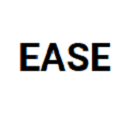Quantum state tomography is a fundamental problem in quantum computing. Given $n$ copies of an unknown $N$-qubit state $\rho \in \mathbb{C}^{d \times d},d=2^N$, the goal is to learn the state up to an accuracy $\epsilon$ in trace distance, with at least probability 0.99. We are interested in the copy complexity, the minimum number of copies of $\rho$ needed to fulfill the task. Pauli measurements have attracted significant attention due to their ease of implementation in limited settings. The best-known upper bound is $O(\frac{N \cdot 12^N}{\epsilon^2})$, and no non-trivial lower bound is known besides the general single-copy lower bound $\Omega(\frac{8^n}{\epsilon^2})$, achieved by hard-to-implement structured POVMs such as MUB, SIC-POVM, and uniform POVM. We have made significant progress on this long-standing problem. We first prove a stronger upper bound of $O(\frac{10^N}{\epsilon^2})$. To complement it with a lower bound of $\Omega(\frac{9.118^N}{\epsilon^2})$, which holds under adaptivity. To our knowledge, this demonstrates the first known separation between Pauli measurements and structured POVMs. The new lower bound is a consequence of a novel framework for adaptive quantum state tomography with measurement constraints. The main advantage over prior methods is that we can use measurement-dependent hard instances to prove tight lower bounds for Pauli measurements. Moreover, we connect the copy-complexity lower bound to the eigenvalues of the measurement information channel, which governs the measurement's capacity to distinguish states. To demonstrate the generality of the new framework, we obtain tight-bounds for adaptive quantum tomography with $k$-outcome measurements, where we recover existing results and establish new ones.
翻译:暂无翻译


